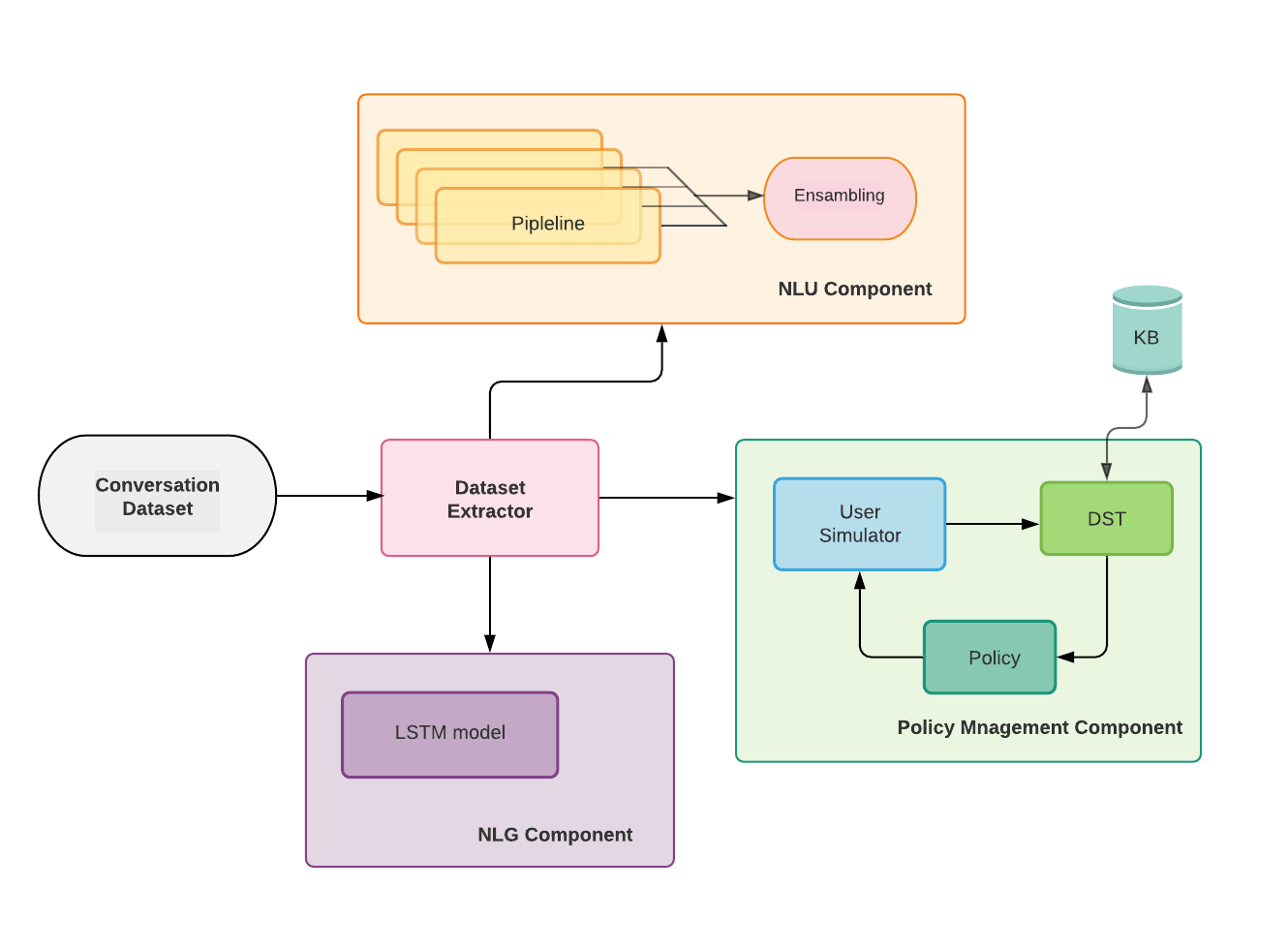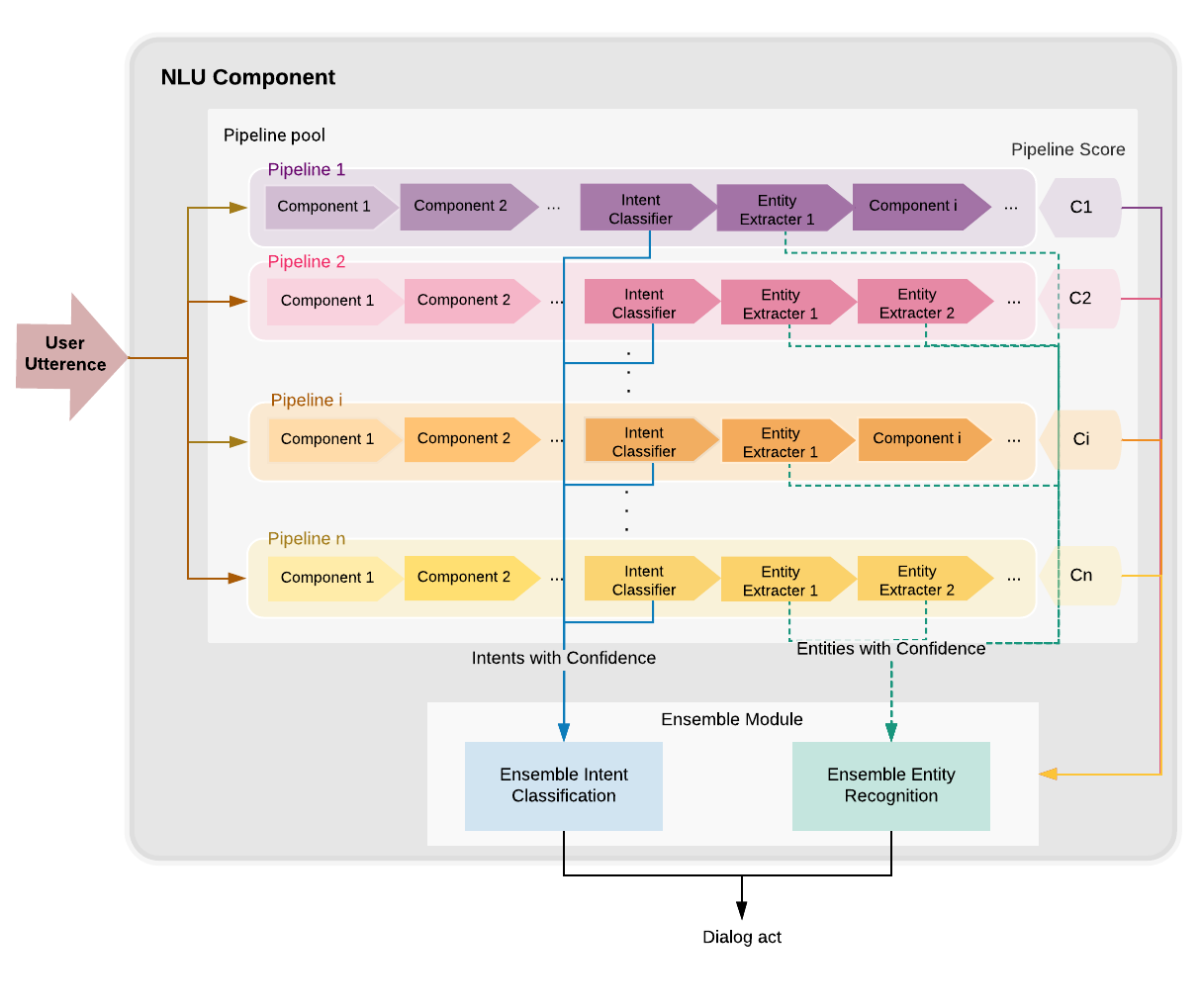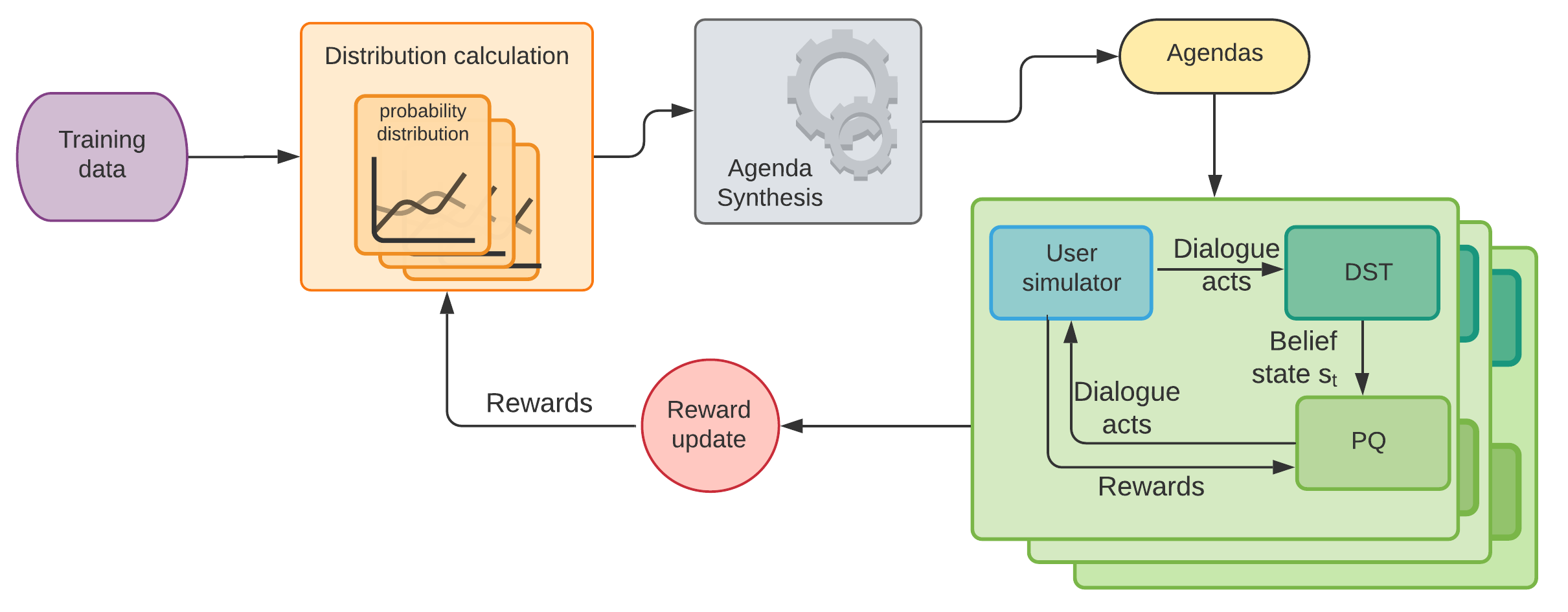Building Task-Oriented Conversational Agents in Low-Resource Settings
- Project Lead(s) / Mentor(s)
- Dr. Uthayasanker Thayasivam
- Prof. Sanath Jayasena
- Contributor(s)
- Tharindu Madusanka
- Durashi Langappuli
- Thisara Welmilla
Summary
Implementing a task-oriented conversational agent in low resource settings addressing the overfitting issue arise when optimizing dialogue policy using Reinforcement Learning (RL) and utilizing pipeline ensembling in Natural Language Understanding (NLU).
Description
We introduce a comprehensive task-oriented conversational agent in low resource settings utilizing a novel pipeline ensemble technique to enhance natural language understanding tasks. The experiments conducted shows that our pipeline ensembling approach outperforms individual pipelines in precision, recall, f1-score and accuracy in both intent classification and entity extraction tasks. Furthermore, we implemented a Reinforcement Learning based dialogue policy learner addressing the overfitting issue by proposing a novel approach for synthetic agenda generation by acknowledging the underlying probability distribution of the user agendas with a reward-based sampling method that prioritizes failed dialogue acts
Setting up
Overall Achitecture
The overall achitecture consists of 5 components,
1. Data extractor : Create seperate dataset to train individual components
2. Natural Language Understanding (NLU) component : Identify intent andextract entities from the user utterance
3. Dialogue State Tracker(DST) module : Track the state of the dialogue flowby the given NLU information and past dialogue history.
4. Dialogue Policy Learner(POL) module : Decides the next best action totake based on the given dialogue state
5. Natural Language Generator(NLG) module : Convert the given dialogueact to a naturally understandable agent utterance
During the training process the data extractor create seperate datasets and to train individual components and each of the individual components trained parallelly.
Natural Language Understanding
To improve the performance of NLU we implemented a novel pipeline ensemble technique that combine outputs of various different pipelines at the inference. Diagram below shows the achitecture of the NLU component
Overall Achitecture
To adress the overfitting issue arise when optimizing dialogue policy using RL we introduce 2 techniques
1. Probability based self-play approach
2. Reward based sampling technique
Diagram below shows the overall achitecture of the dialogue policy optimization component. The probability calculation and agenda synthesis component is facilitate probability based self-play approach while reward update component and probability calculation facilitate reward based sampling technique.
More references
We have used the user simulator described in A User Simulator for Task-Completion Dialogues as the simulator. Github link to the user simulator can be found on here.
Main papers to be cited
@inproceedings{Tharindu2020Dialog,
title={Dialog policy optimization for low resource setting using Self-play and Reward based Sampling},
author={Tharindu Madusanka, Durashi Langappuli, Thisara Welmilla Uthayasanker Thayasivam and Sanath Jayasena},
booktitle={34th Pacific Asia Conference on Language, Information and Computation},
year={2020}
}
License
Apache License 2.0
Code of Conduct
Please read our code of conduct document here.




